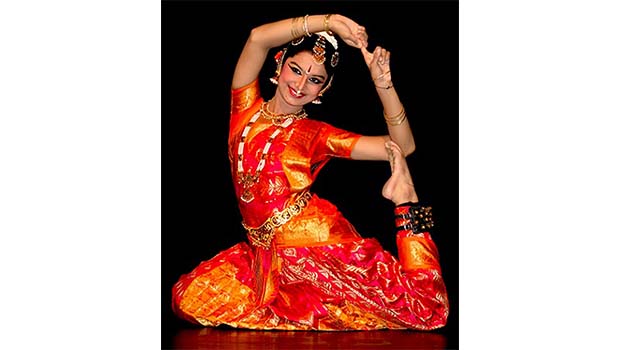Art of Dancing in Bangladesh
Origin, contributors and kinds of dance

Bangladesh has a friendly environment for the art of dancing. Her natural views, forests, rivers, hilly and plain lands, man-made dance schools, and institutes, above all, the keen interests of dancers, choreographers, patrons, tribal and non-tribal people have led to the rapid development of the art of dancing in Bangladesh.
But no body certainly knows where and when the art of dancing developed first. However, from the cave-graffiti it appears that the cavemen also knew how to dance. But they could not make such spectacular ambience in dance as is used in the present days. Dance is an entertainment programme where the dancers dance to derive pleasure and provide the audience with entertainment. Dance is a kind of good exercises for our body and mind too.
Origin of dance in Bangladesh: Dance is found in every country of the world. Like other countries, Bangladesh has her own dance. Bangladesh got its independence in 1971 from East Pakistan which gained its independence in 1947. Therefore, we can say that the length of the history of the dance of Bangladesh is about 50 years. However, after 1947, many cultural institutes were established for the development of culture and art of dancing by Bengali speaking people in the then East Pakistan, when East Pakistan turned into Bangladesh after the Liberation War in 1971, all the cultural institutes and cultures became included in Bangladesh from 1947. Therefore, we may include all cultural institutes and cultures as Bangladeshi culture from 1947 and regard the origin of the art of dance from 1947, in this sense the history of dance is of abut 73 years old. Since then many men and women contributed to the establishment of cultural or dance institutes for the development and expansion of the art of dance. Some of the contributors in the field of the art of dancing are as follows:
Gawhar Jamil (1927-80) and his friend Rabishankar Chatterjee founded Shilpakala Bhaban at Ranking Street in the capital Dhaka. Institutional practice of dancing for the first time began through this institute. The first batch of students of this institute was Jayasree, Shipra Nath and Tapati. At that time, there was a dance teacher Kesta Pal in the dancing arena in Dhaka during 1947-48. Gawhar Jamil, directed the first dance-drama of this country titled Indrer Sabha in 1949. Its music director was Ostad Mir Kashem Khan (1928-1984).
In1950, the daughters of some middle class families of Dhaka, such as Laila Samad, Begam Laily Khan, Zeenath(Chhoto Khuki), Meher (Barah Khuki), Rokeya Kabir, Kulsum Huda and Rosy Majid were enlisted as students of dancing. In this juncture, a school Surbitan was established on the initiative of Anwara Bahar Choudhury( 1918-87), the former Headmistress of Kamrunessa School. Gawhar Jamil served as a teacher in this institute.
Bazlur Rahman Badal of Rajshahi did choreography on poet’s Nazrul poem ‘Bidrohi’ in 1954. Radhapada Adhikari of Dinajpur, Mihir Datta of Barishal, Baren Biswas of Jashore, Kunjalal Sarkar of Rangpur, Kameswar Singha of Sylhet, Anil Kishan Singha, Sankar, Harida and Shefali made special contribution to the field of dance.
GA Mannan launched the Nikkon Lalitakala Academy in 1963. His famous dance dramas include Naksi Kanthar Math, Mohua, Kashmiri, Adhik Khadya Phalao.
The Jago Art Centre was set up under the joint venture of Gawhar Jamil and Rawshan Jamil in 1949. The Chhayanaut Sangeet Vidyayatan was established in 1961 under the sponsorship of poet Sufia Kamal, Farida Hasan, Wahidul Haque, Sanjida Khatun and Kamal Lohani. Jogeshchandra Das (1926-2006) of Mymensingh founded Nataraj Shilpi Niketan in 1965 and directed dance drama ‘Mohua, Jamunabatir Dukha’.
During the post liberation period, dance artiste Alpana Mumtaz (1948-2004) founded the Kathakali Sangeet Academy. Bangladesh Silpakala Aademy was established in 1974 where progammes were organized for training of dance.
Bangladesh Nriityashlpi Sangstha was set up in 1978 under the ages of Gawhar Jamil, GA Mannan and Altamas Ahamed. This institute organizes dance progammes. Golam Mostafa khan established Benuka Lalitakala Kendra.
Hence, the contributions of different persons, celebrities, cultural minded persons gave rise to the establishment of different dance institutes, schools and cultural centers, which led to development of different kinds of art of dance in Bangladesh.
Kinds of dance in Bangladesh: The dance styles of Bangladesh may be divided into three categories, a. classical dance b. folk dance and c. modern dance. Institutions like the Shilpakala Academy, Bulbul Academy’ of Fine Arts and Chhayanat in Bangladesh have helped develop and popularize dance in Bangladesh. During British rule, rajas, maharajas, nawabs and zamindars patronized classical dancing.
Classical Dance: Classical Dance refers to Kathak, Bharatnatyam, Kathakali, Odissi and Manipuri dances. Rabindranath Tagore by merging various forms developed a new genre of classical dance called Rabindranrtya. Besides, Uday Shankar succeeded in popularizing classical dance nationally and internationally. Bulbul Chowdhury created a strain of 'Muslim' dance and was able to gradually popularize dancing in the then East Pakistan now Bangladesh.
Bharatnatyam dance: Bharatnatyam or the dance of Bharata, probably evolved from the classical style of dance depicted in Bharata's Natyashastra
Different expressions and postures convey different meanings. It links many art forms and gives symbolic form to the innermost feelings and sentiments.
Kathak dance: It is presented through intricate footwork and stylized movements to the sounds of the Tabla and the bol. At the climax of the dance, the dancer whirls at an incredible speed. It is developed in the Hindu temples and patronized by the Mogul emperors.
Kathakali dance: It is a South-Indian dance form, chiefly associated with Kerala. Its themes are drawn from epics like the Ramayana and the Mahabharata. Dancers wear masks or heavy make-up. Formerly, women did not dance the Kathakali,and female roles were performed by men, but this is changing.
Manipuri dance: It originated from Manipur, India. It is greatly influenced by Hinduism, the love of Radha-Krishna being its principal theme. Manipuri dance is usually accompanied by Kirtan. Manipuri dances are of two kinds: virile, performed by men, and lasya, performed by women. Here men perform robust physical movements resembling kung fu and acrobatics.
Folk dance
Folk dance or Bangladeshi regional dance passes from generation to generation. It is very simple and spontaneous dance. Folk dances in Bangladesh are mainly of three kinds: religious, social and cultural.
Some kinds of folk dance are as follows:
Baul dance: This dance forms part of the religious rites of bauls. Baul songs are spiritual in theme, and while singing these songs, bauls at one stage start dancing in ecstasy but at times they also perform duets or group dances.
Gambhira dance: This dance accompanies gambhira songs and is quite popular in Bangladesh. It continues to be performed in Rajshahi. The dance is performed by a pair of artistes, one acting the role of a nana (maternal grandfather) and the other that of his nati (grandson). Through their dancing and singing, they critique contemporary social, political, economic and moral problems.
Fakir dance: This dance is performed by the followers of Pir on the occasion of his urs. Long-haired devotees, wearing long, loose garments, gather at the pir's mausoleum at the end of Chaitra (March-April) and burn candles and incense.
Jari dance: This dance accompanies jari singing and is usually performed by shi’ah Muslims. It is organised during muharram and recounts the mournful death of Imam Hossain at Karbala.
Khemta dance: This dance accompanies khemta songs, which are based on the story of Radha and Krishna. Khemta dances may be performed at weddings and pujas. Basically, this is a women’s dance, but in some areas eunuchs are associated with it and it is they who are still keeping this art alive
Mask dances: The gods Shiva, dharma thakur and nil are worshipped during the last days of Chaitra. On the occasion of these pujas, dancers, wearing masks portray different gods and goddesses, present songs and dances.
Leto dance: It is associated with leto songs, and a handsome boy dressed as a girl sings and dances. When Kazi Nazrul Islam was young, he used to compose leto songs and take part in these performances.
Puppet dance: It is found in Yusuf-Zulekha, a 15th century epic. There are three forms of puppets in Bengal: rod puppets, string puppets and glove puppets. The puppeteer manipulates string puppets with strings so that the puppets appear to be dancing.
Dhali dance : Literally, shield dance is a duel between two men whose weapons are thickly woven cane shields and bamboo sticks. The main objective of this dance is to display the dancers' physical prowess and martial skills
Kali dance: This dance is performed with the dancer wearing a black mask portraying the goddess Kali, with her characteristic protruding blood-red tongue. The dancer holds a falchion in one hand and a human skull in the other.
Chhau dance: This is a martial dance with shields, swords and sticks, and is based on the Ramayana and Mahabharata. The characters wear different masks and dresses in keeping with their roles of gods, demons or animals
Chhokra dance: Literally, it means the dance by young boys featuring youths, playing the roles of women and accompanying songs.
Dak dance: It is another battle dance, popular in Manikganj. Its object is to call fellow warriors to battle. The team leader calls out that the enemy has launched an attack. At the call, a number of dancers come running onto the stage.
Dance is a form of art, which is used to entertain the audience. It is a good source of amusement in our society. It is a vital factor of culture of Bangladesh. Dance indicates how munch a society is culturally developed. Dance can express the emotions, feelings, pain and pleasure, smiles and tears, love and hatred of a person, society and a nation. Dance is a good social medium of joy and delight. Dance can enchant the audience and make them forget their anxiety and tension and lead the audience for the time being to the world of dream and happiness. Dance is a good form of exercise, which is very conducive to maintain our physical and mental health. Dance is a part of our national culture. We have to save our culture and improve it. I hope that Bangladesh will progress fast towards the development of the art of dance. In view of it, I urge all concerned to come forward to save, promote and improve our Bengali dance culture, which is connected with our heart and soul.
The writer is a former Joint Secretary to the People’s Republic of Bangladesh and regular contributor to Bangladesh Post


